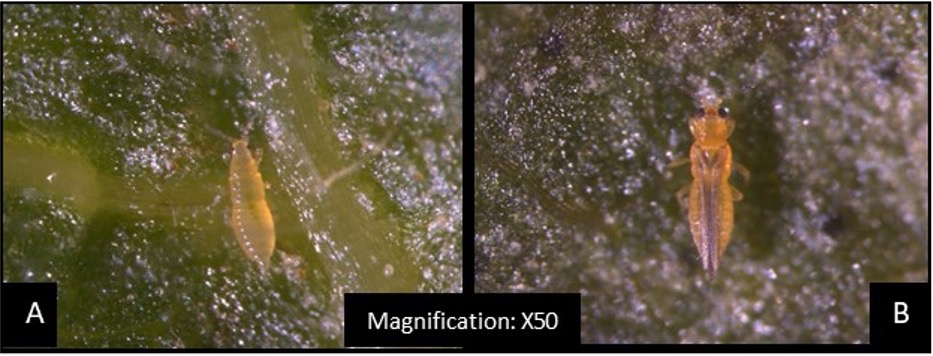By Clint Thompson
University of Florida Institute of Food and Agricultural Sciences (UF/IFAS) research has yielded confirmation on why chilli thrips are an annual problem for strawberry growers, especially early in the season.
Sriyanka Lahiri, University of Florida Institute of Food and Agricultural Sciences (UF/IFAS) assistant professor of entomology and nematology at the Gulf Coast Research and Education Center, talked about the findings she has discovered as part of UF/IFAS research.

Credit: Gagandeep Kaur
“We are surveying three fields that have been known to have high chilli thrips populations. We are surveying the woodland borders. We’ve been collecting about 13 different plant species that exist around the borders of these fields. We’ve been finding a consistent summer population of chilli thrip adult and larval stages in trees like laurel oak, holm oak and muscadine grapes,” Lahiri said.
“We’re continuing to look at the species every month while they change. We definitely have some confirmation that there are these trees and weeds out there in the field that the chilli thrips are utilizing over summer. They’re occurring right at the border of the fields, which makes sense since they’re that much closer to the strawberry crop when it goes into the ground at the end of September and early October.”
Chilli thrips are proficient in expanding their host range. She heard from growers that they’re in the oak trees which prompted research in that direction.
Lahiri said chilli thrips will feed on the leaves of the strawberry plants. They show up as early as possible and then colonize portions of the field even before any flower thrips appear. Thrips are very tiny insects that range in 1 mm to 4 mm in length. They are very active and mobile. In a new University of Florida study, research showed chilli thrips congregated in one area for about two weeks, then moved and infected nearby plants.
Insecticides like Spinetoram, Exirel® and SivantoTM prime are effective insecticides.









